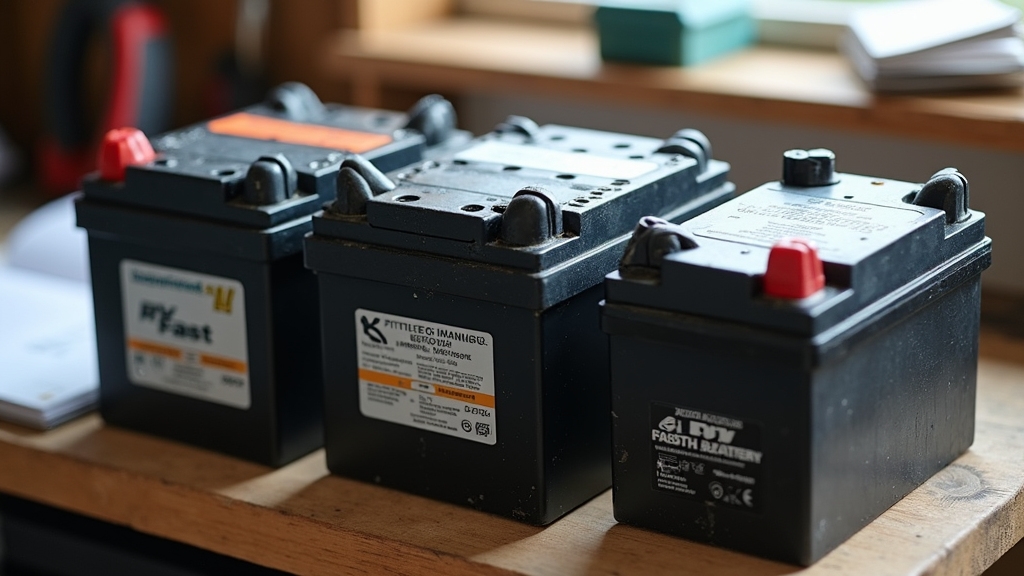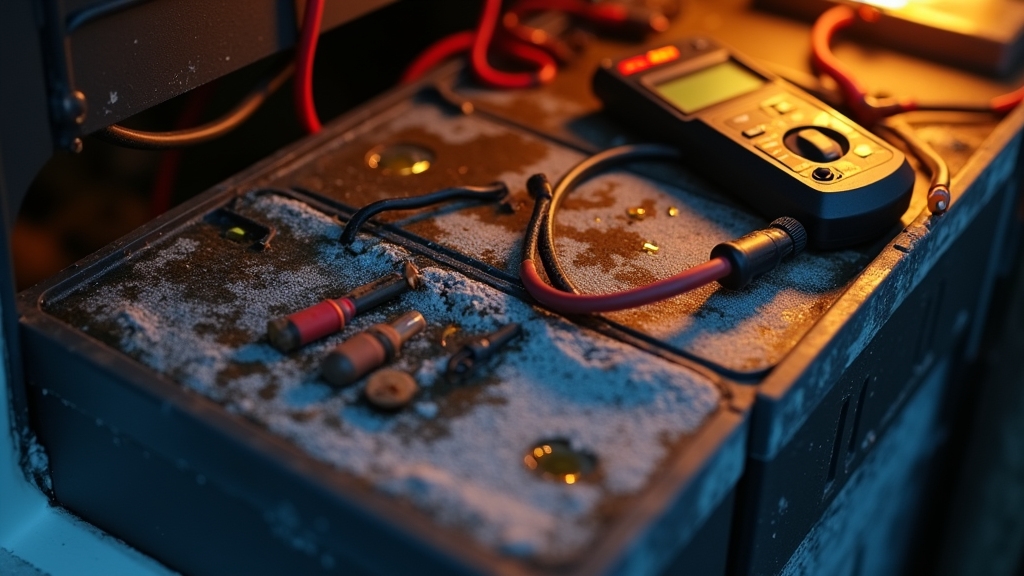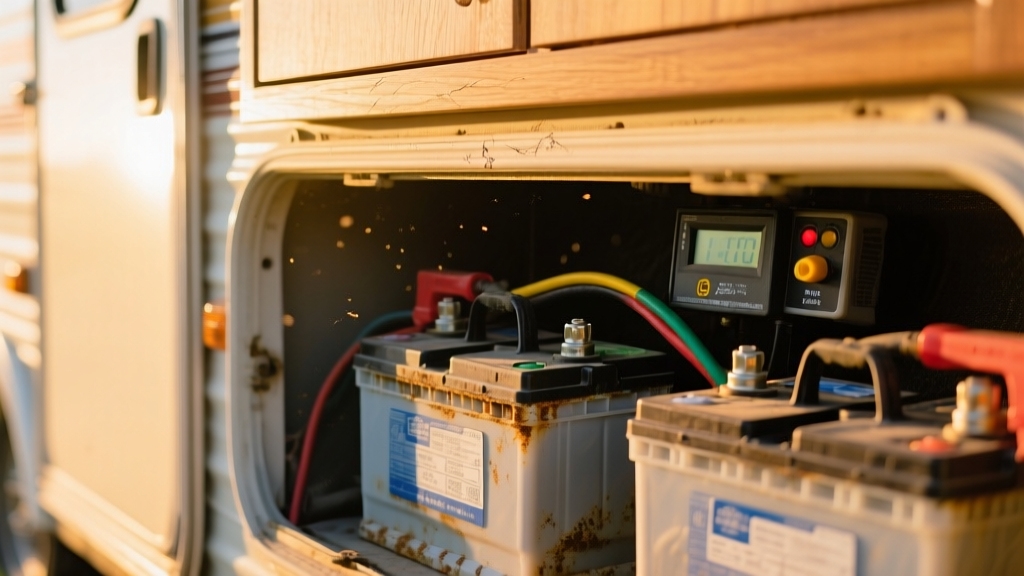You can expect your RV battery to last between 2 and 15 years, depending on the type you choose. Flooded lead-acid batteries tend to last 2-5 years, while lithium batteries can reach up to 15 years.
How you use and maintain your battery heavily affects its lifespan. Regular charging, avoiding deep discharges, and proper storage all help. You’ll find more on what impacts battery life and how to optimize it as you explore further.
Key Takeaways
- Flooded lead-acid RV batteries typically last 2-5 years under average use and maintenance.
- AGM batteries generally have a lifespan of 4-7 years, potentially up to 10 years with proper care.
- Gel batteries last around 6 years on average, with some reaching up to 10 years.
- Lithium RV batteries offer the longest life, ranging from 8 to 15 years with thousands of charge cycles.
- Battery lifespan depends heavily on usage patterns, charging practices, environmental conditions, and regular maintenance.
Typical Lifespan of Different RV Battery Types

When choosing an RV battery, understanding the typical lifespan of each type helps you balance cost, maintenance, and performance. Flooded Lead-Acid batteries last about 2 to 5 years, with 2 to 3 years typical under average use. They need regular maintenance and ventilation due to off-gassing. Proper storage temperatures between 50-77°F can help extend their lifespan.
AGM batteries offer 4 to 7 years on average, up to 10 years with care, and 500 to 800 cycles. They’re maintenance-free and spill-proof but heavier. Gel batteries provide around 6 years, up to 10, with 500 to 1000 cycles. They excel in vibration resistance and wide temperature ranges.
Lithium batteries lead with 8 to 15 years and 3,000 to 15,000 cycles. They offer lightweight, fast charging, and deep discharge capability, though at higher upfront cost. Lithium batteries also benefit from built-in battery management systems that prevent overcharging and extend battery life.
Factors Influencing RV Battery Longevity
Understanding the typical lifespan of RV batteries gives you a baseline, but several factors directly influence how long your battery will actually last in real-world conditions. Your usage patterns matter: regular use prevents sulfation, while prolonged inactivity accelerates deterioration.
Avoid deep discharges beyond 50% for lead-acid batteries to prevent permanent damage. Main deep-cycle types like Flooded Lead-Acid (FLA), AGM, and Lithium-ion each have different characteristics affecting lifespan and maintenance needs. Using a reliable battery monitor can help track discharge levels and prevent excessive depletion.
Charging practices play a critical role. Overcharging causes overheating and corrosion, whereas undercharging promotes sulfation. Use smart chargers to maintain ideal charge cycles and monitor electrolyte levels.
Environmental conditions also impact longevity. Extreme temperatures and high humidity accelerate degradation and corrosion. Hot temperatures increase self-discharge rates, while cold can reduce capacity and even freeze low-charged batteries, leading to damage.
Proper storage is essential. Store lead-acid batteries fully charged and lithium batteries at about 50% charge with periodic recharging. It is also important to keep batteries in a cool, dry place to prevent corrosion and prolong life. In the end, maintain clean terminals and secure connections to prevent resistance and physical damage. This ensures your battery performs reliably over time.
Identifying Signs of Battery Wear and Failure

Although RV batteries are designed for durability, you’ll notice specific signs when they start to wear or fail. Watch for slow engine cranks, dim or flickering lights, and unusual inverter noises; these indicate reduced capacity.
Measure resting voltage with a multimeter. Readings below 12 volts after 10-15 minutes disconnected suggest failure. Regularly performing load tests can provide a more accurate measure of battery health under real operating conditions.
Physically inspect for corrosion on terminals, cracked or swollen casings, acid leaks, and loose connections. Overheating during charging or inability to hold a full charge despite proper maintenance also signals deterioration.
Environmental factors like cold can cause cracking or rapid discharge. Use load tests to confirm capacity under strain. Recognizing these signs early helps you diagnose battery health accurately and avoid unexpected power loss during your travels. It is also important to follow manufacturer instructions to prevent damage caused by improper charging.
Best Practices for Extending Battery Life
To maximize your RV battery’s lifespan, implement consistent maintenance and proper charging techniques. Regularly monitor voltage levels to avoid discharges below 50% for lead-acid batteries. Use a multimeter or battery monitor to track state of charge. Proper battery maintenance is key to prolonging battery life and ensuring safe operation.
Clean terminals every 1–2 months to prevent corrosion. Use a baking soda solution for lead-acid batteries or a dry cloth for lithium types. Employ three-stage smart charging matched to your battery chemistry to prevent overcharge or damage. It is important to match charger to your battery type to avoid any damage.
Avoid leaving batteries plugged in without a smart controller. For storage, fully charge batteries, disconnect them, and store in a cool, dry place. Inspect electrolyte levels in flooded lead-acid batteries monthly, topping with distilled water as needed.
Choosing the Right Battery Capacity and Configuration
When selecting the right battery capacity and configuration for your RV, you need to start by accurately calculating your daily energy consumption. Add up the watt-hours of all appliances and divide by your system voltage, usually 12V, to find the required amp-hours (Ah). Understanding the Ampere Hour Rating helps in estimating how long your battery can supply power.
Choose battery types based on efficiency, lifespan, and budget: lithium-ion offers long life and high efficiency but costs more, while lead-acid is cheaper with a shorter lifespan. Consider AGM or Gel batteries for balanced performance. Configure batteries in series or parallel to meet voltage and capacity needs, ensuring matched capacities for ideal operation.
Don’t forget space constraints and, for lithium batteries, install a Battery Management System (BMS). Tailor your setup to off-grid demands or shore power availability, balancing cost, maintenance, and environmental factors for the best results.
Additionally, factoring in your trip length and daily appliance usage helps determine the appropriate battery capacity to avoid power shortages during your travels, which is crucial for meeting your off-grid power needs.
Frequently Asked Questions
How Do Extreme Weather Conditions Affect RV Battery Performance?
Extreme weather conditions degrade your RV battery’s performance by accelerating chemical reactions in heat, causing permanent damage and electrolyte loss. Cold slows reactions, reducing capacity and increasing energy needed for heating cells.
Both extremes shorten battery life, increase charging times, and lower usable power. To protect your battery, use insulation and thermal management, and adjust charging practices. Avoiding peak heat and preheating in cold guarantees more reliable, efficient operation year-round.
Can RV Batteries Be Recycled or Disposed of Safely?
Yes, you can recycle RV batteries safely by taking them to authorized collection centers or retailers that participate in battery take-back programs. Before transport, fully discharge and insulate terminals to prevent shorts or fires.
Avoid disposing of batteries in regular trash since they contain hazardous materials. Damaged or leaking batteries need special handling and must be reported to hazardous waste facilities. Always follow local regulations and use approved recycling methods to protect the environment.
What Are the Differences in Charging Times Among Battery Types?
You’ll notice lithium RV batteries charge up to four times faster than lead-acid types, finishing in just 1 to 2 hours. Lead-acid batteries need 8 to 12 hours due to slower chemical reactions and careful voltage control.
AGM and Gel batteries fall between, typically charging in 6 to 10 hours. Temperature, battery capacity, and charger quality also impact these times, so optimizing conditions helps you recharge efficiently.
How Does Solar Power Integration Impact RV Battery Lifespan?
Solar power integration extends your RV battery lifespan by reducing deep discharges and minimizing charge cycles. It keeps batteries at a higher state of charge and provides consistent, gentle charging, which prevents stress and degradation.
With proper solar setup, including quality charge controllers and panel maintenance, you’ll avoid overcharging and overheating. This means less frequent replacements, lower maintenance, and better overall battery health, especially when paired with the right battery type.
Are There Specific Brands Known for Longer-Lasting RV Batteries?
Think of your RV battery as a marathon runner: some brands train harder and last longer. For AGM batteries, Optima YellowTop and Trojan shine with durability. Lead-acid fans trust Trojan T-105 and Crown for their resilience.
Lithium options like Battle Born and LiTime surpass others with thousands of cycles and faster charging. Choosing these brands guarantees your power source won’t quit before you do, delivering reliable energy mile after mile.
Maintenance Tips That Keep Your RV Battery Going Strong
While you might think RV batteries wear out too quickly to be worth the investment, understanding their typical lifespan and proper maintenance can notably extend their usability. By choosing the right battery type and capacity, monitoring wear signs, and following best practices, you’ll get reliable power for your adventures.
Don’t let concerns about battery life hold you back. Equip yourself with the right knowledge and keep your RV powered efficiently for years to come.



